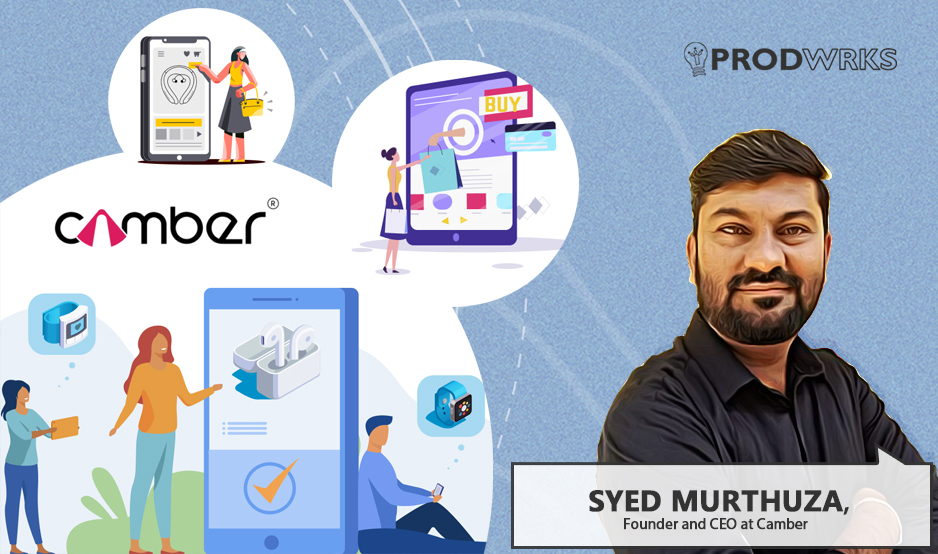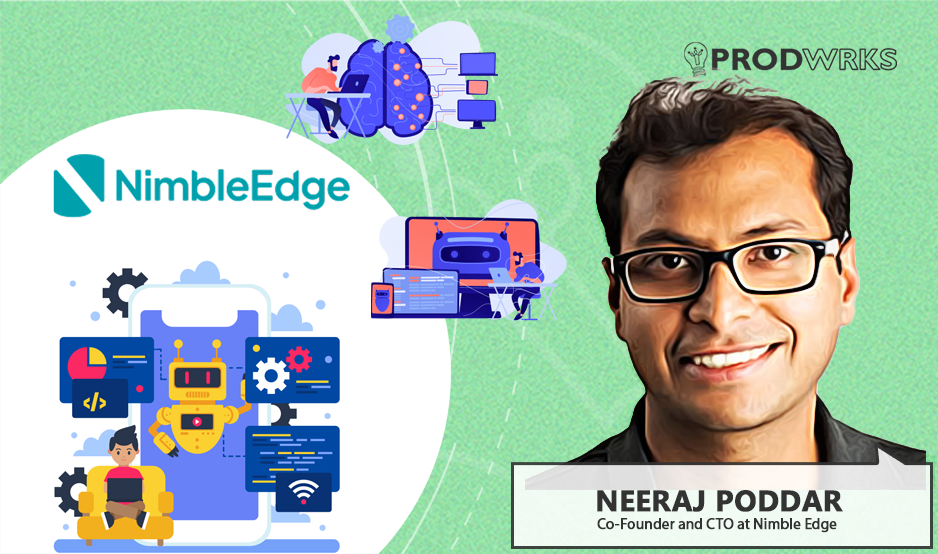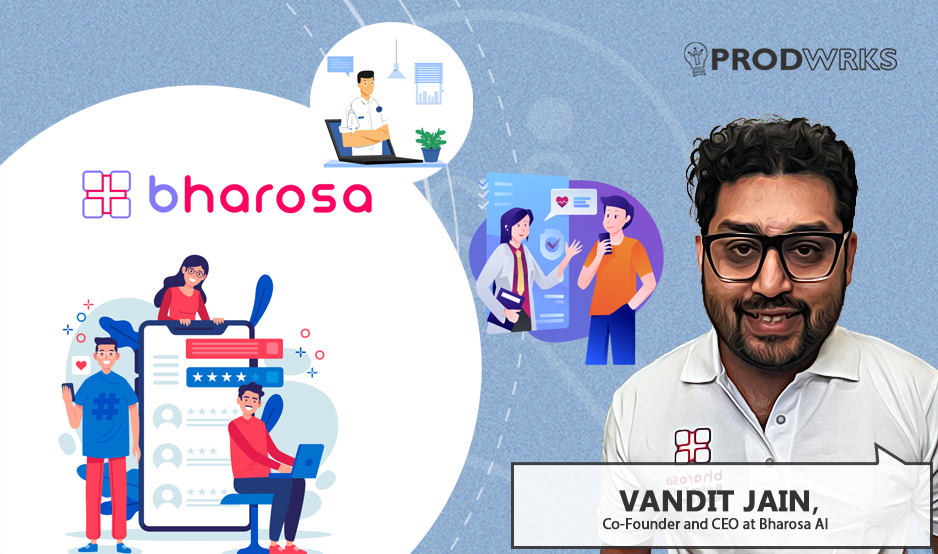
We all know that 95% of startups fail. It’s a phrase that’s been echoed time and again. But as Rocky says, “It’s not how hard you hit that matters. It’s how hard you get hit and keep moving forward. That’s how winning is done.”
The startup journey of the founders of Wolken, Rohan Joshi and Sudhir Prabhu, perfectly embodies this famous dialogue from celluloid. They have seen their fair share of failures after starting Wolken in 2012, and they’ve implemented successful pivots to set new standards of excellence in the segments of IT Service Management (ITSM) and Service Desk solutions.
Today, Wolken is in its third pivot. It has a suite of SaaS applications that empower enterprises to streamline business processes, enhance internal and external communications, and manage IT assets across enterprises. Their success speaks for itself, with 30+ enterprise-level customers using Wolken, including Fortune 100 and 200 lists of companies.
ProdWrks reached out to Rohan Joshi to learn about the secret behind Wolken’s phoenix-like comebacks, and he shared some pretty interesting insights for startups today on how to pivot successfully, how to get enterprise clients, and how to scale to compete with industry giants.
Using Experience to Identify White Spaces
Rohan Joshi and Sudhir Prabhu started Wolken with a collective 30 years of industry experience behind them. In their previous avatars at L&T, Rohan was the Head of Sales for Europe, having grown sales from zero to over $120 million. Sudhir managed a P&L of $90 million and oversaw a team of 1200 professionals.
Their storied experience gave Rohan and Sudhir unique insights into the enterprise software market. They realized that there were a lot of white spaces in the market that could be addressed by either products or better systems integration.
“This was a time before APIs made integration simple. In the pre-API era, system protocols with ingress and egress points had to be coded individually for software used by enterprises to recognise each other and work in cohesion,” explains Rohan.
The integration complexities of that era sparked a realisation – modern organisations needed out-of-the-box, scalable solutions for ITSM, help desk and customer service.
Rohan says, “The cost of acquiring help desk and customer service solutions was very high. Enterprises were spending hundreds of millions of dollars just to keep the help desk alive in the projects we worked on. We felt that it was a bit too much and decided to disrupt these areas with Wolken.”
The Pivots
Wolken today is in its third pivot, and the story behind each pivot teaches important lessons in management that you won’t find in textbooks. To start with, Rohan says, “You have to be very careful not to get carried away by your own ideas. You may think you are the wisest guy you know. But the customer knows the difference.”
In the first pivot from 2011 to 2014, Wolken had its product development in IT collaboration software and successfully reached various industries and sectors.
In the second pivot from 2014 to 2017, Wolken developed the IT service management tool for enterprises to monitor the company’s IT assets.
In their third pivot today, Wolken software set out to help modern organisations transform their relationships with customers and employees with out-of-the-box, configurable, and scalable enterprise-class service desk solutions deployed on the cloud.
Over a decade of pivots, the Wolken team learned that startups providing enterprise solutions need more than just a good set of features to get market acceptance, and Rohan explains why.
It’s hard to sell to Enterprises
“We discovered that enterprises don't have a clear idea about how much IT assets they have - hardware or software. And the reason for that is because of churn within their data centres and mismatch of entries in the different tracking systems that enterprises use.”
The mismatch happens especially when legacy infrastructure is replaced with a newer one and the entry logs are not appropriately managed in a single platform. So, Wolken thought of putting in smart bots to automatically track and figure out the IT assets across an enterprise.
Rohan says that though the idea was great, it was too far ahead of its time as enterprises did not immediately entrust startups with their IT asset management inventory.
“They would rather trust ServiceNow or larger players even if they give only 70% accurate information because they could justify to the risk management team that they had done the right thing by selecting a well-established brand. Whereas even if we gave 100% accuracy at a lower cost with our asset management tools, we were a startup, and we don’t get the trust vote from the enterprise risk management team,” says Rohan.
How did Wolken gain inroads with Enterprises?
“To get here, I must confess our past experience greatly helped us. When we were at L&T, some of these enterprises were our customers. Sudhir and I had good relationships with their leaders, who trusted our industry experience. So we asked them for a chance to prove ourselves with Wolken.”
“You may get one or two customers with the relationships you build from your experience, but this has to scale up within the enterprise and outside. It's not enough for a startup to have one or two customers. We should not just depend on people we know. You have to have volumes,” explains Rohan.
In their third pivot today, Rohan shares three simple lessons that he has learned from his previous mistakes and the challenges of pitching to enterprises and building scalable sales models.
- Start by doing in-depth research on customers running your competitor’s product.
- Find out when their subscription ends and where you can pitch in.
- Figure out your true USP. Your USP cannot be only your price or lower cost of service.
Building for Enterprises’ Expectations
Regarding technology and security, Rohan says, “In B2B products, your architecture must be very robust because security and scalability are very important for enterprises. Both security and scalability have to be tested and matched.”
“One of our largest customers today tried our product four years back when we bid for their approval. Our pricing is way better than our competitor, which was ServiceNow. But the customer decided to go with ServiceNow. They justified their decision by saying that when they did an SQL query, they found that our product took 0.3 seconds to give them results, whereas our competitor took just 0.03 seconds!”
Rohan says, “I think there is a certain maturity that is needed to understand why customers choose what they choose. And it should be in your interest to figure out why it's so, and getting that right is very important. You have to go in with zero ego. If you have an ego that says ‘I went to IIT/IIM’ the first failure will hit you hard, and you won't recover from it.”
Why Brand Matters - Insights On Enterprise Decision Making
Rohan says, “You will be surprised that the most common reason clients gave for not choosing our products during our initial years is that they don't know who we are! So, in the end, it is not functionality, it is not product features, it is not the price, it is the lack of brand name.”
“Presenting papers and getting patents are things that give you the vote that separates yourself from your competition. So, there is quite a lot of movement in that direction, and also, being a part of organisations like the IEEE gives you branding in the right place. As a B2B product you need to be seen in the right light by your buyers,” explains Rohan.
Rohan says that having a full-time CTO, an R&D head, and a chief architect who can create robust and exciting roadmaps in these directions can help startups bridge the branding game gap.
In the ITSM space, which is a $150 billion market, Rohan also advises startup founders to differentiate between actual enterprise B2B clients and those who are B2C product material, pretending to be a b2b.
Measures of Success
He says, “We are at about 1.75x and working on making it to 2x and 2.25x in the next couple of years. In this business, the first 80% is easy to achieve. It's the last 20% you'll have to work harder for. So that is where we currently are.”
“So, if you apply for 10 RFPs and if you're shortlisted in three to five, it's a good number because it improves your chances of winning. But if your RFP score is one or two, then that is very dangerous. We are slowly inching towards 5 out of 10 RFPs.”
“We may think that we are the brightest guys and have the smartest tool available on the planet. But when we come up against the competitor, we realise that there are better products with better features.”
“You start by answering questions in your RFPs, and if you are shortlisted, they ask you to do a pilot project. At this point, you may think that you have a product that’s 100% complete, but you’ll suddenly find that there are features listed in the RFP which will make sense for you to incorporate in your product.”
What’s next for Wolken?
Over the last few years, Wolken has established a strong presence globally in the semiconductor, electronic retail, banking, and financial services segments.
Rohan says that their goal now is to distinguish themselves by selling to customers who have a global clientele whose customers are Japanese, Spanish, Chinese, or Korean.
This indirectly plays to Wolken’s strength since they have localized products, and Wolken’s language system enables their enterprise clients in English-speaking countries to communicate seamlessly with their customers whose native languages are Japanese, Spanish, Chinese, or Korean.
Rohan says, “We are also actively following developments in large language models and generative AIs. While they're exciting, they don't know the boundary conditions and guardrails that are needed. So we are working on it. It is very exciting, but, you know, we don't want to kind of commit 100% down that route.”
“The idea of building a moat is to give these kinds of collateral solutions and benefits, which are over and above the normal benefits, which our competitors promise.”



